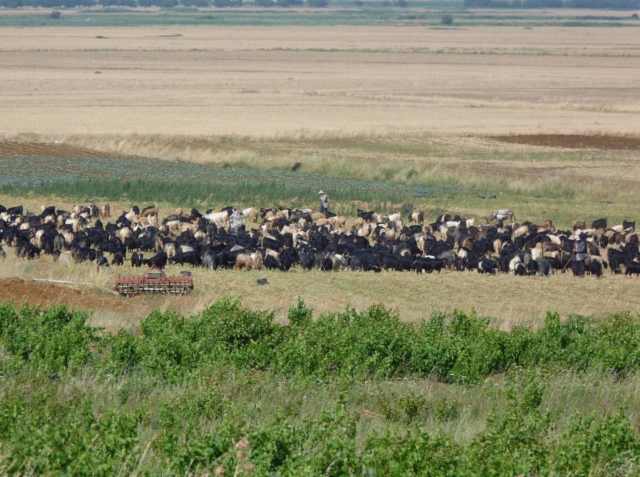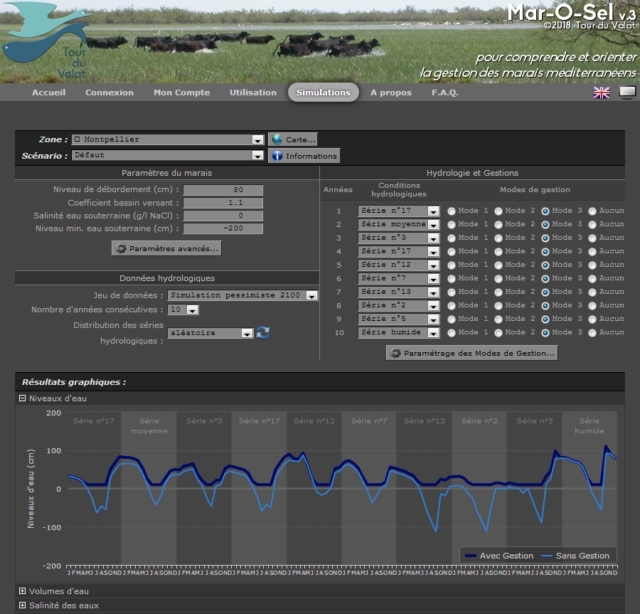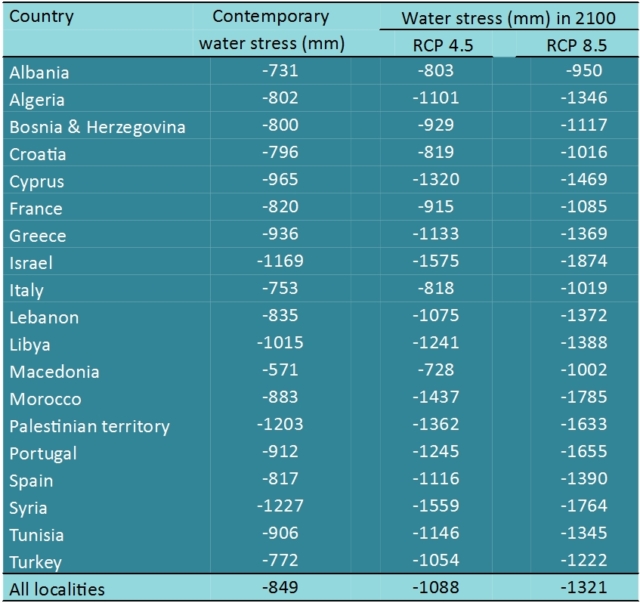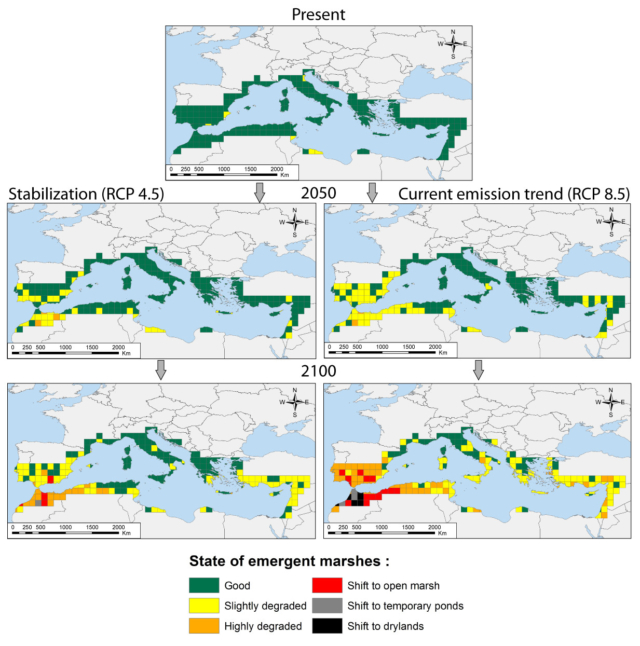Mediterranean wetlands and their contribution to humankind are at risk
Wetlands have been declining worldwide over the last century with climate change becoming an additional pressure, especially in the Mediterranean region where annual water loss by evapotranspiration naturally exceeds precipitation (see the last Mediterranean Wetlands Observatory report [1]).
Within the Ecopotential [2] project, researchers from Tour du Valat investigated how climate change would affect the values and functions of seasonally-flooded wetlands with emergent vegetation across the Mediterranean Basin.
These ecosystems provide sheltered and nutrient-rich refuges for various animal species, while provisioning building materials and contributing to water purification and storage as well as other ecosystem services [3].

Combining climate, hydrology and ecology models to apprehend the future of wetlands
Thanks to a collaboration with experts from the Institute of Atmospheric Sciences and Climate of the National Research Council of Italy (ISAC-CNR [4]), climate projections at the 2050 and 2100 time horizons were integrated into Mar-O-Sel, a free online software (mar-o-sel.net [5]) developed by Tour du Valat to promote rational use of Mediterranean marsh.
Climate projections based on two greenhouse gas emission scenarios, RCP4.5 and RCP8.5, were obtained from the Rossby Centre [6] RCA4 Regional Climate Model, and then extracted at 229 localities around the Mediterranean Basin.
 [7]
[7]We first parameterized a seasonally-flooded wetland under current climate conditions in Mar-o-sel by setting iteratively catchment area, overflow level and water table depth at each locality.
Second, we simulated the future state of these virtual wetlands based on the precipitation and evapotranspiration projected by 2050 and 2100
Wetland evolution (maintenance, degradation or habitat shift) was estimated based on ecological thresholds in terms of flooding duration and frequency defined by wetland experts from Tour du Valat. For instance, it is considered that a Mediterranean marsh with emergent vegetation needs to be flooded for a minimum of 6 months and dry for at least 2 months to be in good condition.
From global climate models to wetland impact assessment
Simulations performed in the Mar-O-Sel software show that water deficit in wetlands will increase heterogeneously across the Mediterranean area (Table 1).
 [8]
[8]The response of wetlands to water deficit increase is shown in Figure 1. Based on our simulations, 97% of localities could potentially have wetlands in good state today. By 2050, however, this proportion would decrease to 81% and 68% under the RCP 4.5 and RCP 8.5 scenarios, respectively, decreasing further to 52% and 27% by 2100.
Mean annual water input needed to preserve the biodiversity and contribution of wetlands to humankind would vary from 1,055 cubic meters per hectare for slightly degraded sites to 3,537 cubic meters per hectare for a wetland collapsing into dry land. The countries at higher risk of wetland degradation and loss are Algeria, Morocco, Portugal and Spain.
 [9]
[9]From wetland impact assessment to proactive management
There is abundant literature predicting the effects of climate change on ecosystem functions and species’ ranges. However, climate change models are rarely incorporated into restoration and conservation plans because they are not developed at the spatial and temporal scales used by territorial planners and environmental managers.
The software used in this study (Mar-O-Sel) is a user-friendly online tool that can be used freely to understand the effect of climate variability on wetland hydrology and for testing different management scenarios depending upon the amount of water locally available at different times of year.
With the integration of future climate data, Mar-O-Sel has become a valuable exploratory tool to understand how flooding patterns of wetlands will be impacted by climate change and to what extent these changes can be counteracted by water inputs, by restorating/preserving the watershed, or by promoting a more sustainable agriculture.
We strongly encourage its use by wetland managers and territorial planners who wish to integrate climate change projections into decision making processes to better preserve the biodiversity and ecosystem services provided by Mediterranean seasonally-flooded wetlands over the next decades.
Adapting management and territorial planning to the wetland resilience thresholds identified in this study should be a priority on the agenda, not only to fulfil environmental goals, but also to sustain Mediterranean rural populations.
Contact: Brigitte Poulin, Head of the Ecocystems Department (e-mail [10])
For further information:
- Access and use the Mar-o-Sel [5] software
- Lefebvre G., Germain C., Poulin B. 2015. Contribution of rainfall vs. water management to Mediterranean wetland hydrology: Development of an interactive simulation tool to foster adaptation to climate variability. Environmental Modelling & Software 74:39–47. doi: 10.1016/j.envsoft.2015.08.004 [11]
- Lefebvre G., Redmond L., Germain C., Palazzi E., Terzago S., Willm L., Poulin B. 2019. Predicting the vulnerability of seasonally-flooded wetlands to climate change across the Mediterranean Basin. Science of The Total Environment 692:546–555. doi: 10.1016/j.scitotenv.2019.07.263 [12]
